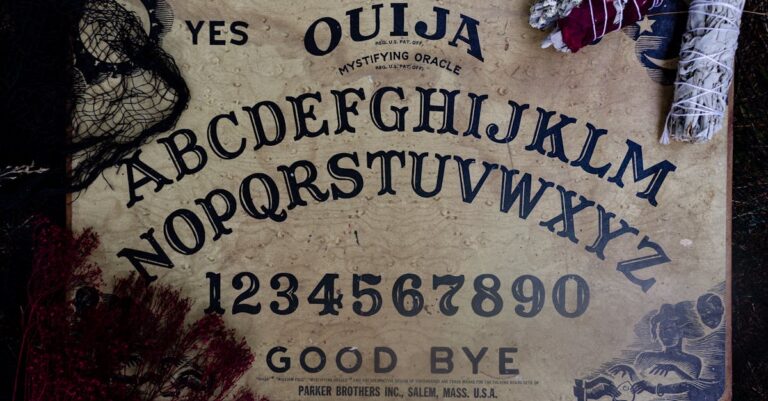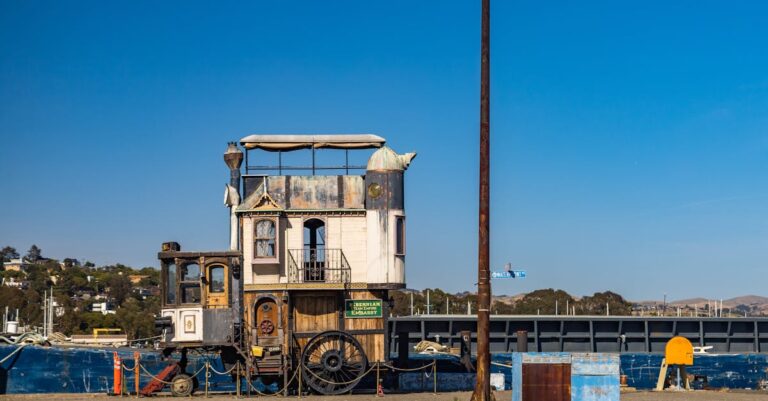
## The Static Bloom
Dust motes danced in the single shaft of light slicing through the gloom. Elouise traced a finger across the unfinished cheekbone of her latest sculpture, clay cool and yielding. It was supposed to be a boy, laughing—or at least, *remembering* laughter. Lately, everything felt muted, edges blurred like watercolors left in the rain.
The gray was winning. Not a gradual fading, but an encroachment. It rose from the floor like a tide, swallowing brilliance. Crimson portraits became charcoal sketches. Emerald tapestries dissolved into ash-toned weaves. The museum, once a riot of sensation, felt like a tomb slowly suffocating itself.
She worked with frantic energy. Each figure, each curve, an attempt to anchor something solid against the creeping nullity. This wasn’t just art; it was preservation. People didn’t understand, not outside the Wardens. They saw sculptures. Elouise felt she was trapping ghosts—the lingering echoes of what *was*, before the colors bled away.
Old Man Tiber, his face a roadmap of worry lines etched deep into pale skin, shuffled along the gallery floor. He carried a chipped porcelain teacup, steam curling around his face like a shroud.
“Another one gone,” he rasped, nodding toward a once-vibrant seascape now rendered in shades of slate.
“The ‘Summer’s Embrace’,” Elouise confirmed, her voice flat. “How far did it go?”
“Complete dissipation,” Tiber replied, setting the teacup down with a delicate clink. “Not even an echo remains. The Wardens are… concerned.”
The Wardens. A closed order, cloaked in ritual and silence. They guarded the museum’s collection—and a secret far older, more terrifying. Color wasn’t just pigment; it was soul. Every hue held a fragment of life, memory, feeling. And something was stealing them.
“They’ll want a full spectrum analysis,” Elouise said, already anticipating the stifling protocol.
“They want results,” Tiber corrected, his gaze unwavering. “The Director spoke of… containment measures.”
She’d heard the veiled threats before. Containment meant seals, silencing spells, possibly even destroying artifacts before the dissipation spread. It was a barbaric solution, but the Wardens operated on logic, not sentiment.
Elouise returned to her sculpture. She needed a breakthrough, something beyond the sterile precision of analysis. Something *real*.
The artifact room smelled of ozone and decay. Stolen treasures, salvaged remnants from a dimension fractured long ago—a place they called Chroma. The Wardens had recovered hundreds of objects, each pulsing with residual color energy. Most were locked away under layers of protective wards.
She bypassed the security panel with a practiced ease, her fingers flying across the keypad. It wasn’t about rebellion; it was necessity. She needed access to the uncatalogued collection, the fragments dismissed as too unstable, too fragmented.
Her light fell on a series of sealed tubes filled with viscous paints—colors she’d never seen before. Iridescent blues that shifted like oil slicks, fiery oranges that seemed to burn without heat, violets so deep they felt like a void.
“What have you got there?” A voice, sharp and cold, cut through the silence.
Elouise didn’t flinch. Sister Lyra stood in the doorway, her face impassive, eyes narrowed behind spectacles.
“Unstable samples,” Elouise replied, her tone even. “I’m running a comparative analysis.”
“The Director expressly forbade access to those tubes. They represent a… risk.” Lyra advanced, her presence radiating disapproval.
“A risk we can’t afford to ignore,” Elouise countered, picking up one of the tubes. The glass felt cool and strangely alive against her palm. “I believe these paints hold a key to the dissipation.”
“And what makes you think that?” Lyra’s voice was laced with skepticism.
Elouise ignored the question. She uncapped the tube, a faint hum resonating as the paint’s scent filled the air—a smell like sun-warmed earth and forgotten dreams. She brushed a tiny amount onto the clay of her unfinished sculpture.
The effect was instantaneous. The gray around the figure recoiled, as if burned. A faint shimmer of color bloomed on the clay—not a restoration, but an intensification, a vibrancy that hadn’t existed before.
“Impossible,” Lyra breathed, her eyes widening behind her spectacles. “The paints… they’re reacting.”
“They aren’t just pigment,” Elouise said, her voice barely a whisper. “I think they hold coded information—emotional echoes from Chroma.”
“Explain,” Lyra demanded, her composure cracking.
Elouise showed her the analysis readings—subtle shifts in energy patterns, complex waveforms that corresponded to specific emotional states. “When I apply the paint, it resonates with the residual energy in the artifact. It’s like… rewinding time, restoring missing instances.”
Lyra stared at the readings for a long moment. “The Director will want to see this.”
“He’ll try to seal them,” Elouise said, her voice grim. “He won’t understand.”
“Then we don’t tell him everything,” Lyra said, her gaze meeting Elouise’s. “We need to understand what these paints are capable of.”
That night, they worked in secret, deciphering the codes within the paint. Each hue corresponded to a specific emotional signature: joy, sorrow, rage, fear—complex blends that formed the fabric of Chroma. They discovered a hidden pattern within the codes—a series of coordinates, pointing to a location beyond their dimension.
“It’s a gate,” Elouise said, her voice trembling with excitement. “A way back to Chroma.”
“The Director will never allow it,” Lyra said, her face etched with worry. “Chroma was fractured for a reason.”
“The dissipation is getting worse,” Elouise countered. “If we don’t find a way to restore Chroma, everything will be lost.”
They knew the risks. The gate could lead them into a trap, or worse—a dimension consumed by chaos. But the alternative was unthinkable.
They began preparing for the expedition, gathering supplies and studying ancient texts. They needed to understand the rules of Chroma, the dangers they might face.
“We’ll need a conduit,” Lyra said, her fingers tracing the coordinates on an ancient map. “Someone who can resonate with the emotional energy of Chroma.”
Elouise knew who she meant. Old Man Tiber. He wasn’t just a caretaker; he possessed an uncanny ability to sense the lingering echoes of forgotten emotions.
They found Tiber in the museum gardens, tending a single, withered rose bush. He listened to their plan in silence, his face impassive.
“Chroma is a ghost,” he said finally, his voice raspy. “A beautiful, terrible ghost.”
“We need your help to find it,” Elouise pleaded.
Tiber sighed, his shoulders slumping. “I haven’t felt Chroma in decades. The echoes have faded.”
“But you remember,” Lyra said gently. “You can guide us.”
Tiber looked at them for a long moment, his eyes filled with sorrow. “I’ll try,” he said finally. “But be warned, the past is a dangerous place.”
The gate shimmered in the abandoned west wing of the museum, a swirling vortex of color and light. It pulsed with an energy that felt both exhilarating and terrifying.
“Are you sure about this?” Lyra asked, her voice barely a whisper.
Elouise nodded, clutching the tubes of paint in her hand. “We have to try.”
Tiber stepped forward, his eyes closed, his hand outstretched. He began chanting in a forgotten language, the words resonating with an ancient power. The gate flared, revealing a glimpse of another world—a landscape bathed in vibrant colors, a city shimmering with light.
“It’s opening,” Tiber said, his voice strained. “But the energy is unstable.”
They stepped through the gate, bracing themselves for the unknown. The world exploded around them—a kaleidoscope of sensation, a symphony of color and light.
Chroma was real. And it was dying.
The city was a ruin, its buildings crumbling, its streets deserted. The colors were fading, replaced by the creeping gray that had consumed their own world.
“The dissipation is worse here,” Lyra said, her voice grim. “It’s like a plague.”
They moved through the city, searching for any sign of life. They found remnants of a once-thriving civilization—ancient artifacts, crumbling libraries, abandoned workshops. But everywhere they looked, there was only decay.
“What happened here?” Elouise asked, her voice barely a whisper.
Tiber pointed to a series of murals depicting a catastrophic event—a rift in the sky, a surge of dark energy, a city consumed by chaos.
“The Shattering,” he said, his voice raspy. “A conflict that tore Chroma apart.”
“What kind of conflict?” Lyra asked, her eyes narrowed.
Tiber pointed to a series of symbols depicting two warring factions—the Lumin, who worshipped the power of light, and the Umbra, who embraced the darkness.
“A war over color,” he said, his voice grim. “They believed that controlling color meant controlling life itself.”
“And they destroyed everything,” Elouise said, her voice barely a whisper.
They found the source of the dissipation in the heart of the city—a massive rift in the sky, pulsing with dark energy. The rift was growing, threatening to consume Chroma completely.
“We have to close it,” Lyra said, her eyes narrowed.
“But how?” Elouise asked, her voice barely a whisper.
Tiber pointed to an ancient shrine at the base of the rift—a shrine dedicated to the balance between light and darkness.
“We need to restore the balance,” he said, his voice grim. “But it will require a sacrifice.”
They spent days studying the ancient texts, searching for a way to restore the balance. They discovered that the only way to close the rift was to combine the power of light and darkness—to create a new color, a color that represented harmony.
“We need to combine the paint,” Elouise said, her eyes narrowed. “But it could be dangerous.”
“It’s our only chance,” Lyra said, her eyes narrowed.
They gathered the paint—the brightest hues of light and the deepest shades of darkness. They mixed them together, creating a swirling vortex of color—a color that shimmered with an otherworldly power.
“It’s ready,” Elouise said, her eyes narrowed.
They approached the rift, bracing themselves for the unknown. They poured the paint into the vortex, creating a blinding flash of light—a light that illuminated the entire city.
The rift began to close, its dark energy receding—its power diminishing. The colors around them intensified, their vibrancy returning—their beauty restored.
The city began to revive, its buildings repairing themselves—its streets repopulating. The colors around them shimmered with an otherworldly power—a power that filled them with hope.
They had restored the balance. They had saved Chroma.
They returned to their own world, carrying with them a newfound hope—a newfound purpose. They had discovered the secret to restoring color—the secret to saving their own world.
They shared their discovery with the Wardens, who were initially skeptical—but eventually convinced by the evidence. The Wardens began using the paint to restore color to their own collection—to their own world.
The gray began to recede, its darkness diminishing—its power fading. The colors around them intensified, their vibrancy returning—their beauty restored.
The museum became a symbol of hope—a symbol of renewal. People came from all over the world to witness the restoration—to experience the beauty of color—to feel the power of life.
Elouise continued to sculpt, creating figures that captured the essence of Chroma—the beauty of light and darkness—the power of harmony. She had found her purpose—to share the secret to restoring color—to save the world, one sculpture at a time.
She looked at her latest creation—a figure of a young woman, laughing—remembering laughter. The colors around them shimmered with an otherworldly power—a power that filled her with hope.
The static bloom was fading, replaced by the vibrant colors of life—the beauty of renewal—the power of hope.


